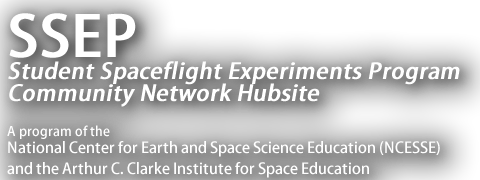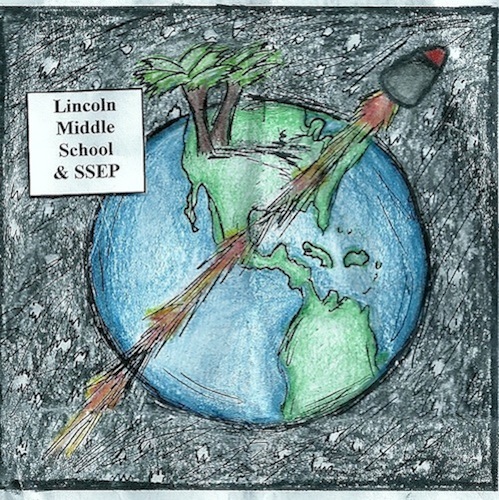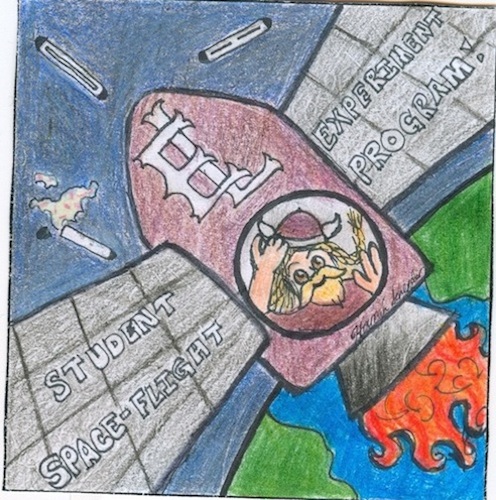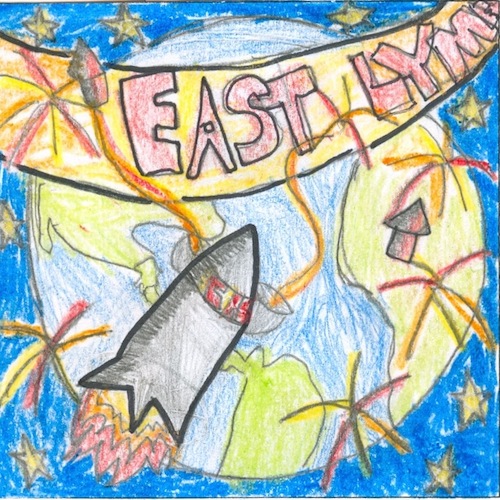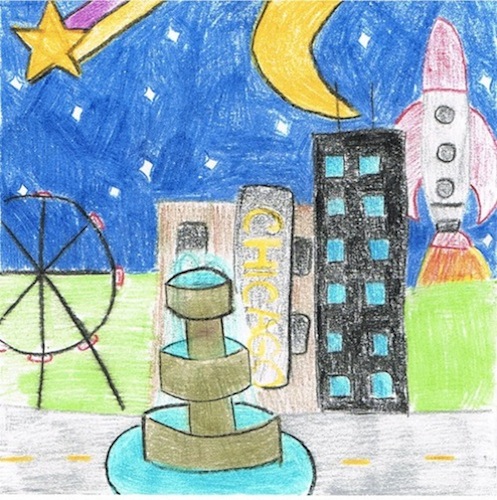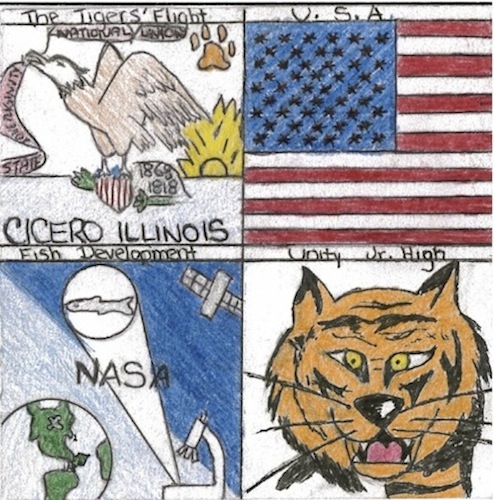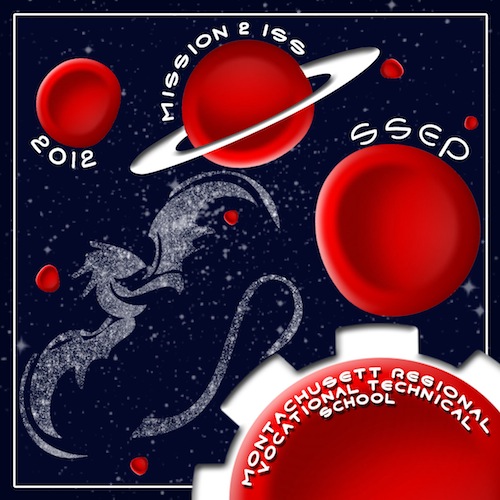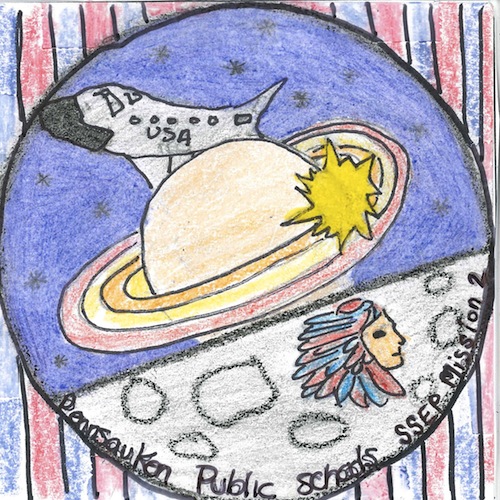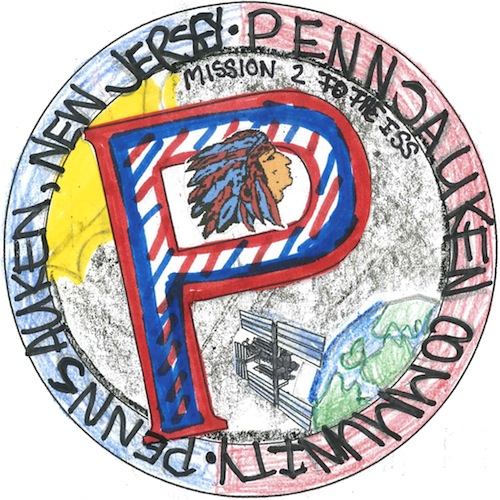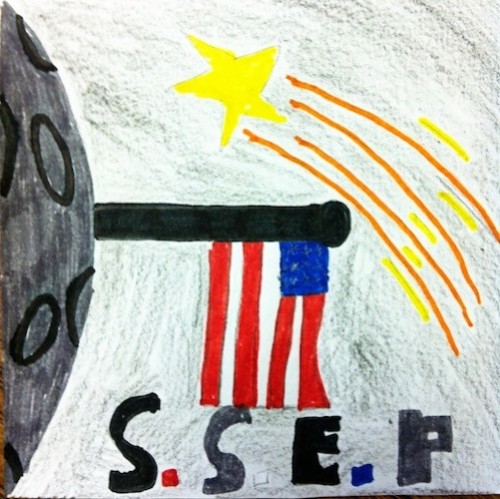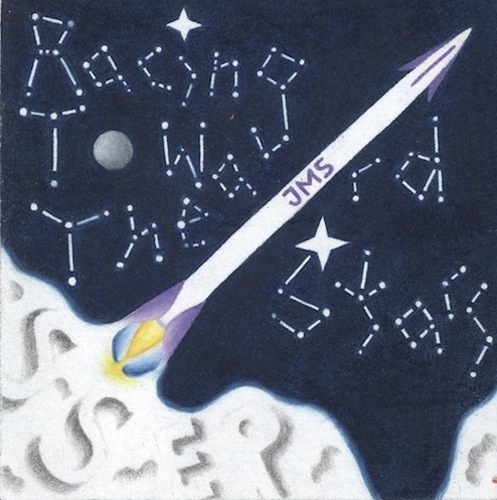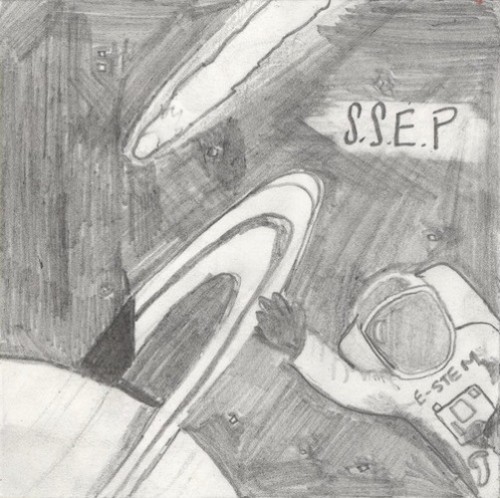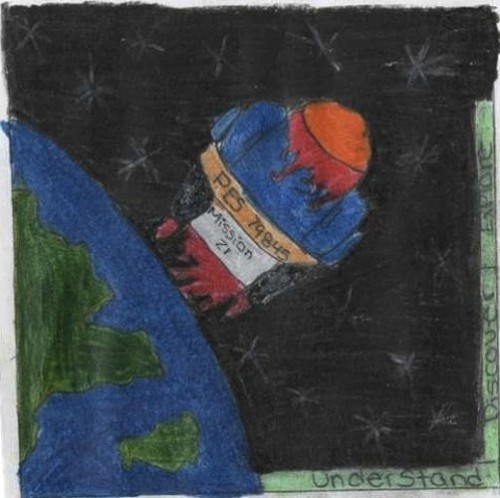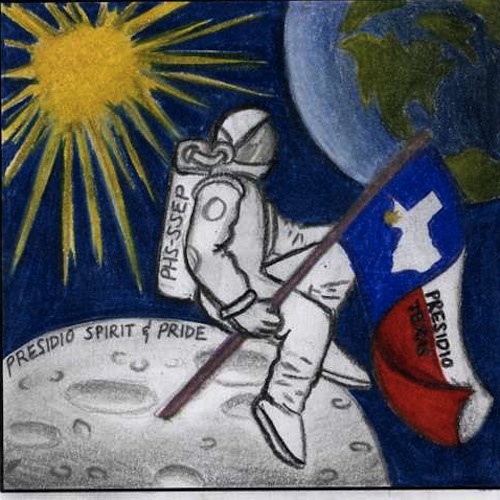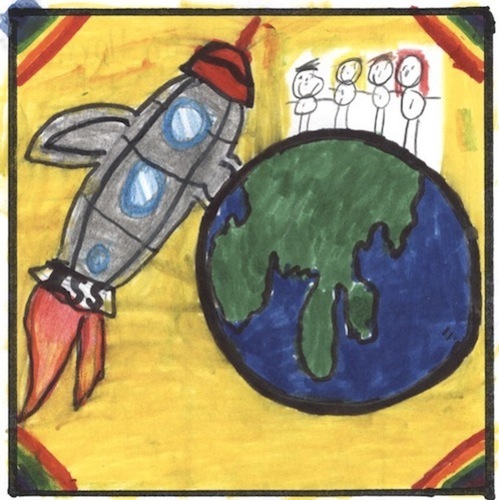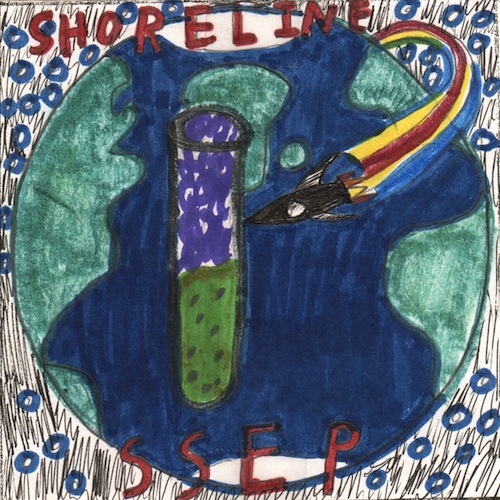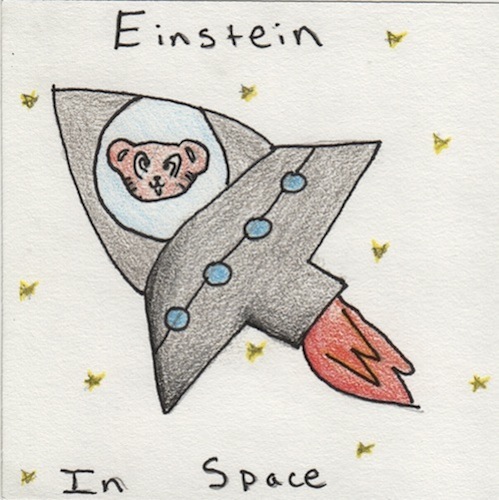The National Center for Earth and Space Science Education is proud to present the 21 Mission Patches selected for flight to the International Space Station (ISS) in Antares, the experiments payload for SSEP Mission 2 to ISS. Across the 11 communities participating in Mission 2 to ISS, 37,600 students were given the opportunity to participate in mission patch design competitions at the local level, and there were 5,960 patch designs submitted. Judges within the communities selected the 21 patches shown below.
You can also read more about the Mission 2 to ISS Patch Competition at the main SSEP website.
1. Santa Monica, California
Jump to Santa Monica’s Community Profile
Jump to the Selected Flight Experiment on Mission 2 to ISS
Mission Patch design contests provided an opportunity for all 4,500 elementary and middle school students to participate. Students were instructed to create a patch design which included at least a symbol of our community and a symbol of our participation in the Student Spaceflight Experiment Program (SSEP). Each entry was also submitted with a paragraph describing the significance of the graphics and colors used in the design. In the end, of the approximately 120 patch designs submitted, two were selected by a panel of two science teachers and an art teacher. The final designs were the efforts of Maddie Schultz, Luna Albertini and Grace Slansky.
2. East Lyme, Connecticut
Jump to East Lyme’s Community Profile
Jump to the Selected Flight Experiment on Mission 2 to ISS
East Lyme School District offered two Mission Patch design competitions. The first was open to grade 5-8 students at East Lyme Middle School, which was the school engaged in the experiment design competition. The second was open to our K-4 and 9-12 students at 3 elementary schools and our high school. Overall the competition was available to every student in our school district, a total of 3,123 students. We received over 200 entries, which were judged by a panel of teachers and administrators. Our two winners both displayed a strong sense of pride in the East Lyme community. Our winning patch from the middle school shows our East Lyme mascot, the Viking, flying in a maroon shuttle (our district color). There are also the three types of FME minilabs floating out in space. Each winning design was turned into cloth patches and sold to the community as a fundraiser.
3. Chicago, Illinois
Jump to Chicago’s Community Profile
Jump to the Selected Flight Experiment on Mission 2 to ISS
All students in grades K-8 were invited to participate in the Mission Patch Design competition. 288 patches were submitted from grades K-3, and 119 patches were submitted from grades 4-8, giving us a total of 407 patches submitted by approximately 700 students participating in the competition. One winning patch was chosen from grades K-3, and another winning patch was chosen from grades 4-8. Our winning patch from grades K-3 was created by a second grader named Daniel. It features a friendly space-alien welcoming Skinner West to space. Our winning patch from grades 4-8 was created by a fifth grader named Christine. It features a rocket-ship blasting off among Chicago’s most prominent landmarks.
4. Cicero, Illinois
Jump to Cicero’s Community Profile
Jump to the Selected Flight Experiment on Mission 2 to ISS
The mission patch competition held at Unity Junior High School was for the entire student body, which consists of approximately 2,800 students. The two art teachers involved on the SSEP team coordinated this school-wide effort with the cooperation of the science teachers, so all 7th and 8th grade students could participate. The students were directed to create a design incorporating the ideas of science, space exploration, school spirit, and community pride. The creativity and imagination of the designs, in addition to the amount of designs submitted made it difficult to choose a winner. In the end a 7th grader, Vanessa Delgado, beat out the competition, from a total of 2,800 patches submitted, to have her design become a part of history.
5. Fitchburg, Massachusetts
Jump to Fitchburg’s Community Profile
Jump to the Selected Flight Experiment on Mission 2 to ISS
Monty Tech held two mission patch design competitions. One was opened up to all of the Monty Tech students in grades 9-12. The second was opened up to any student in grade K-8 residing in central Massachusetts. A total of 245 students from grades K-8 and 9-12 participated in the mission patch design competition. Out of a total of 150 patch designs submitted, patches by Kendall Hyre (Monty Tech) and Ayvri Gagne (John R. Briggs Elementary School) were selected for flight. Kendall Hyre says: “This patch is a representation of the latest SSEP mission taking flight on the SpaceX Dragon in September 2012. Our Mission 2 experiment is studying synthetic red blood cells in microgravity. They are represented here as the planets. You can see the logo of the rocket in the star constellation. Our school has been involved with SSEP, as being the only vocational school, having sent numerous experiments into space. It is represented with the gear around the biggest blood cell.” We are proud of our continued accomplishments. Monty Tech gets you to “gear” up and reach for the stars.
6. Pennsauken, New Jersey
Jump to Pennsauken’s Community Profile
Jump to the Selected Flight Experiment on Mission 2 to ISS
The Mission Patch design competition was open to all K-12 students in the Pennsauken Township School District, a total of 5,500 students. Different schools approached the competition differently. Some schools chose to generate the patches out of the art classes, while other schools’ individual teachers coordinated the efforts. Many teachers across the district made the patch competition a requirement in class, resulting in hundreds of entries, however, the district review committee requested that finalists representing each grade in each school be sent for review. The review committee received well over 100 patches, as some teachers decided their students’ products were all of high quality. The review committee narrowed down and made the selections based on first, the connection to the Pennsauken Public Schools and SSEP Mission 2 to the International Space Station. One patch was chosen from the pool of entries from grades K-5 and the other from grades 6-12. 5th Grader Isaiah Miranda and 7th grader Adanna Chukwuocha designed the patches.
7. Guilford County, North Carolina
Jump to Guilford County’s Community Profile
Jump to the Selected Flight Experiment on Mission 2 to ISS
Guilford County Schools expanded the participation in the Student Spaceflight Experiments Program by holding two simultaneous Mission Patch competitions for middle and high school students, one for our Northern Region and one for our Western Region. This represents 15,500 grade 6-12 students in 22 schools given the opportunity to participate. There were 244 patches received for judging. The Mission Patch competition, like the SSEP experiment design competition, emphasized the 21st century skills of creativity, cooperation, and collaboration. With students formally competing against other students in their region, and with the two regions informally competing against each other for participation and patch design, excitement and curiosity developed across our community and engaged students in conversations about space, science, technology, engineering, math, and design. One winning patch was created by Northern High student Alexa Sassorossi. The other winning patch was created by Northwest Middle School student Maddie Cassetty.
8. Houston, Texas – Johnston Middle School
Jump to Houston’s Community Profile
Jump to the Selected Flight Experiment on Mission 2 to ISS
Over 2,000 students in grades 5-8 at three schools in Houston Independent School District were given the unique opportunity of designing a mission patch to represent Houston for SSEP Mission 2 to ISS. Two competitions were held, one just for grades 5-6 across the three schools, and the other for grades 7-8. The two winning patches were selected by judges from NASA, Rice University and the four HISD schools that submitted microgravity experiment proposals for Mission 2. Sebastian Beil from Johnston Middle School will represent his community with his awe-inspiring artwork for the second time. Abilio Sanchez from E-STEM Academy Middle School West joins him as a newly inducted SSEP artist. Abilio’s patch represents our future goals in space by depicting an astronaut and rocket approaching Saturn while Sebastian’s patch highlights his school’s motto using constellations. Alexia Arrellano from Garden Oaks was a runner-up. Houston ISD is honored by the two chosen patches from over 300 entries received to represent our community for Mission 2 to the ISS!
9. Presidio, Texas
Jump to Presidio’s Community Profile
Jump to the Selected Flight Experiment on Mission 2 to ISS
The SSEP Presidio Local Community held two Mission Patch Design Contests in March 2012, one for grades 3-6 and one for grades 7-12. More than 1,500 students participated in the design contest and close to 975 entries (individual and group entry) were reviewed. First place winners from each grade level were awarded gold medals and their designs were showcased during the district PTO meeting and Presidio Rocketry Documentary Film Premiere Night. During this event, the entire community of Presidio voted and selected the winner for each category. The winners were 5th graders Melissa Lozano and Lea Catano, and 12th grader Shandira Omar. The two winning mission patches will actually be flown to the International Space Station in the fall to symbolize Presidio’s venture in STEM education on the high frontier!
10. Russell County, Virginia
Jump to Russell County’s Community Profile
Jump to the Selected Flight Experiment on Mission 2 to ISS
The mission patch competition for Russell County Public Schools was open to all students grades preK-12. There were two competitions, one for grades preK-6 and the other was open to grades 7-12. All patch designs were the work of individual students, no team-designed patches were accepted. Each school had a lead teacher that worked with students and collected the patches. For preK-6 there were 454 patches submitted by students, and 77 patches from grade 7-12 students, reflecting the 531 students involved in the competition. The preK-6 winner is Ethan Harris, a first grader from Lebanon Primary School, and the grade 7-12 winner is Rebecca Harris (no relation to Ethan).
11 Shoreline, Washington
Jump to Shoreline’s Community Profile
Jump to the Selected Flight Experiment on Mission 2 to ISS
All students at Highland Terrace Elementary School and Einstein Middle School (1189 students total) were invited to participate in an open patch design competition. One hundred and thirty six patches were submitted by students in grades K-8. Elementary school (grades K-6) and middle school (grades 7-8) patches were judged in two separate groups by a parent and teacher panel. The elementary school patch selected is from Carly Krantz, a 6th grade student at Highland Terrace. The middle school patch selected was from Lauren Cook, an 8th grade student at Einstein Middle. The winning artists were recognized along with the experimental design finalists at a community celebration in April 2012.
